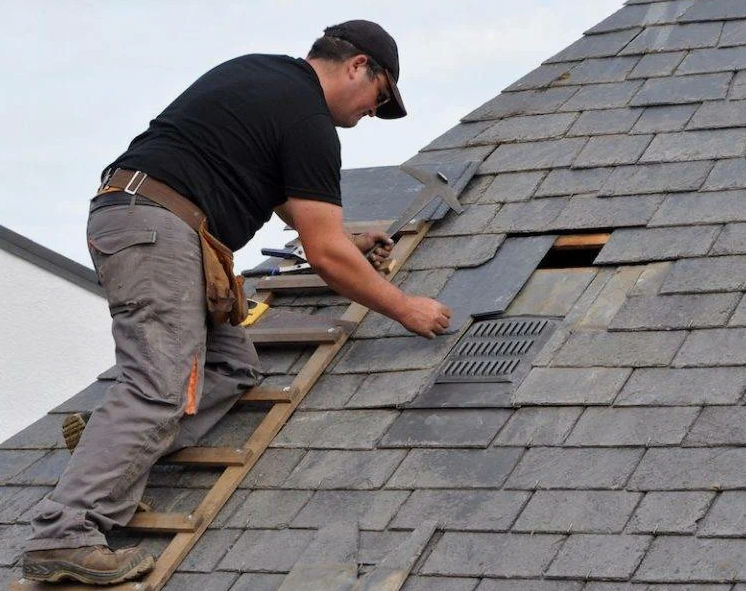Installing a new roof is a major investment in your home’s longevity, protection, and overall value. However, many homeowners and even some contractors make critical mistakes during roof installation that can lead to costly repairs, structural damage, and safety hazards. Avoiding these common pitfalls can help ensure your new roof lasts for years to come.
In this guide, we’ll explore the most frequent mistakes people make when installing a new roof and how to avoid them. Whether you’re a homeowner hiring a professional or a contractor looking to refine your skills, this article will help you get the job done right.
1. Choosing the Wrong Roofing Material
Not all roofing materials are created equal. The type of roofing material you choose should be based on factors like climate, durability, energy efficiency, and cost. Some common mistakes include:
- Ignoring climate conditions: A metal roof might work well in hot, dry climates but may not be ideal for areas with frequent hailstorms.
- Focusing only on price: Cheap materials might save money upfront but can cost more in repairs and replacements later.
- Not considering aesthetics and curb appeal: Your roof is a significant part of your home’s exterior. Choosing a material that complements your house enhances its overall appearance.
Solution:
Research various roofing materials and consult a professional to determine the best option for your home’s location, structure, and budget.
2. Poor Roof Installation Practices
Even the best roofing materials won’t protect your home if they’re not installed correctly. Some of the most common installation errors include:
- Misaligned shingles: When shingles are not properly aligned, they can create gaps that allow water to seep in, leading to leaks and water damage.
- Nail placement mistakes: Using too few nails or placing them in the wrong spots can cause shingles to lift and detach over time.
- Improper flashing installation: Flashing helps prevent water from entering at roof joints, chimneys, and vents. If installed incorrectly, leaks can occur.
Solution:
Hire an experienced roofing contractor with a proven track record of quality work. If you’re doing it yourself, follow manufacturer guidelines and double-check your work.
3. Skipping Roof Ventilation
Proper ventilation is crucial for maintaining your roof’s lifespan. Without it, heat and moisture can build up in your attic, leading to:
- Premature shingle deterioration
- Mold and mildew growth
- Higher energy costs due to poor insulation
Solution:
Ensure that your roof has an adequate ventilation system, including ridge vents, soffit vents, or gable vents, to allow proper airflow.
4. Ignoring the Roof Deck Condition
The roof deck serves as the foundation for your shingles. Installing a new roof over a damaged or weak deck can lead to:
- Uneven surfaces that compromise shingle alignment
- Leaks and structural instability
- Shortened roof lifespan
Solution:
Inspect the roof deck before installation and replace any rotting or damaged sections.
5. Improper Underlayment Installation
The underlayment is a critical protective layer beneath the shingles that provides additional waterproofing. Common mistakes include:
- Skipping underlayment entirely
- Using low-quality materials
- Failing to install it evenly
Solution:
Always install a high-quality underlayment that suits your climate and roofing type to enhance durability and protection.
6. Overlooking the Importance of Drip Edges
Drip edges prevent water from seeping under the roof and causing structural damage. Without them, you may face:
- Water damage to fascia and soffits
- Increased risk of leaks
- Potential pest infestations
Solution:
Ensure drip edges are installed correctly along the roof edges to direct water away from the structure.
7. Failing to Consider Roof Slope and Drainage
A roof’s slope impacts how well it sheds water. Common drainage mistakes include:
- Improper pitch calculations leading to water pooling
- Lack of proper drainage systems like gutters and downspouts
Solution:
Make sure the roof is designed with an adequate slope for water drainage, and install gutters to channel water away from your home.
8. DIY Roof Installation Without Proper Knowledge
While DIY projects can save money, roofing is a job best left to professionals unless you have significant experience. Common DIY mistakes include:
- Lack of safety precautions
- Incorrect material selection
- Improper sealing of joints and edges
Solution:
If you lack roofing experience, it’s best to hire a professional to ensure your roof is installed safely and correctly.
9. Not Hiring a Qualified Roofing Contractor
Not all contractors are equal in skill and experience. Hiring an unqualified roofer can lead to subpar work, expensive repairs, and even voided warranties. Red flags include:
- No proper licensing or insurance
- Unrealistically low price estimates
- Lack of references or reviews
Solution:
Do your research and hire a reputable contractor with positive reviews, proper certifications, and experience in roof installation.
10. Forgetting About Roof Maintenance Post-Installation
Even a perfectly installed roof requires regular maintenance to stay in top shape. Neglecting maintenance can lead to premature deterioration and expensive repairs.
Solution:
Schedule regular inspections and cleanings to check for potential issues like missing shingles, mold growth, and blocked gutters.
FAQs
1. How long does a new roof last?
The lifespan of a new roof depends on the material used. Asphalt shingles typically last 20-30 years, while metal, tile, and slate roofs can last 50 years or more with proper maintenance.
2. Can I install a new roof over an old one?
While it’s possible to install a new roof over an existing one, it’s not always recommended. Layering shingles can add extra weight, hide underlying damage, and reduce the new roof’s lifespan.
3. What’s the best time of year to install a new roof?
Spring and fall are the best seasons for roof installation due to mild weather conditions. However, professional roofers can work year-round with the right precautions.



